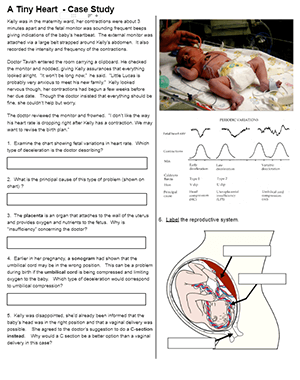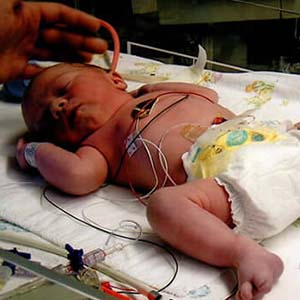
The case study on Lucas is one of my most downloaded resources. I finally did an update to clean up the wording and student tasks. Now, students have clear places to write (or type) answers as they work through a case of a baby born with a heart defect.
The case follows Lucas, starting with some concerning vitals during his birth. Students can view a graph showing his heart rate during contractions and determine what is causing the concern. In this case, late deceleration indicates that his heart rate is slowing right after a contraction, indicating that he may not be getting enough oxygen.
The case includes a section on fetal circulation, focusing on the anatomy of blood flow in the fetus. Since the lungs aren’t functioning, blood bypasses the pulmonary circuit through a series of shunts, the foramen ovale, ductus venosus, and ductus arteriosus. They learn that one of the most common heart defects in newborns in a ventricular septal defect.
After his birth, Lucas is cyanotic and doctors perform an echocardiogram to determine the cause. In this section. They discover that he has aortic stenosis. Students examine vital signs and label a heart in this section. The case continues for students to learn how the defect was corrected with balloon dilation, and later with a valve transplant called the Ross Procedure.

This resource includes actual photos of baby Lucas which I posted with permission of the parents who are personal friends of mine. The case is loosely based on his story, though some details have been added to make an engaging story. Lucas is now a senior in high school and is doing well!
Resource Details
The student worksheet is available for free and includes larger photos that you can display on an overhead. Students often need help with understanding fetal circulation, but for the most part, they can do this activity on their own or in small groups.
Ideally, students will already have a basic understanding of the heart and circulation (pulmonary and systemic). Students label the heart or use a heart coloring activity and view classroom models of the heart. . They also dissect a sheep heart in this unit. All of the resources for the circulatory system are posted on my class page.
You can also show this video from the Philadelphia children’s hospital that explains how the Ross procedure works.

